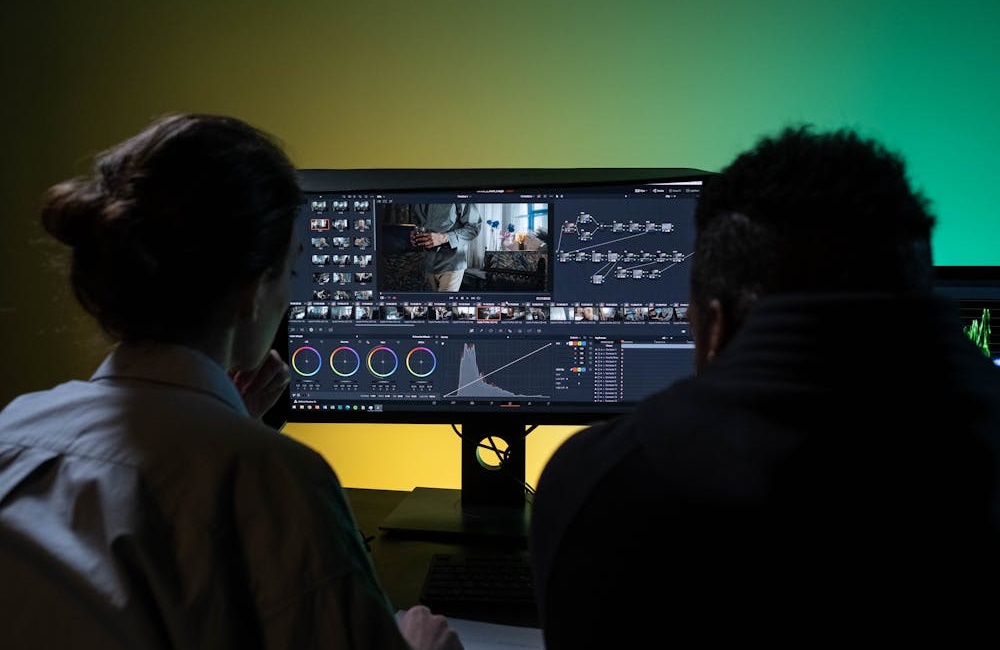Marketing in the modern world often looks simple from the outside. You may think all it takes is a smartphone, an endless stream of social media stories, and maybe a Gen-Z hire who knows how to keep the content flowing. While those things help, they’re only a fraction of what real, effective marketing requires today.
To build campaigns that stand out in a competitive digital landscape, you need more than just enthusiasm and Instagram savvy. Successful marketing demands the right people, the right vision, and the ability to work on a mutual campaign. Most importantly, it also requires the right tools and technology. Without the right setup, even the most talented creative team will struggle to deliver results.

Below are the essential tools and equipment your modern marketing team needs to create high-quality, professional content that drives engagement and builds your brand.
1. Professional Creative Software Suites
Great marketing starts with great visuals, and that requires professional creative tools. While free apps are fine for beginners, they quickly become limiting when you’re aiming for polished, branded content.
- Adobe Creative Cloud (Photoshop, Illustrator, Premiere Pro, After Effects) remains the industry standard for design, photo editing, and video production.
- Alternatives like Affinity Suite, DaVinci Resolve, or Canva Pro can also serve depending on your team’s needs and budget.
Investing in professional software does more than just improve output—it tells your team (and your customers) that you take brand quality seriously. It also gives your marketers the ability to work seamlessly across projects, ensuring a cohesive and recognizable brand identity.
2. High-Performance Computers and Laptops
Powerful software requires powerful hardware. Trying to edit high-resolution videos or large design files on a slow, outdated computer can grind productivity to a halt.
When outfitting your team, make sure their computers or laptops include:
- Dedicated graphics cards (GPUs) with strong dedicated graphics processing capabilities and high VRAM.
- Fast processors (Intel i7/i9, AMD Ryzen 7/9, or Apple M-series).
- Ample RAM (at least 16GB, ideally 32GB for video editors).
- SSD storage for faster load times and rendering.
Marketing professionals working with video, motion graphics, or 3D assets need machines built for performance. Skimping here will cost you more in lost time and frustration than you’ll save in upfront costs.
3. Professional Recording Equipment
Even the most skilled editor can’t fix poor source material. To create content that resonates and feels professional, your team needs high-quality recording tools.
Essential gear includes:
- DSLR or mirrorless cameras with interchangeable lenses.
- Lighting kits for consistent, flattering visuals.
- Professional microphones and audio recorders for crystal-clear sound.
- Tripods and stabilizers to avoid shaky footage.
For brands that want to take visuals further, drones are now a popular addition, allowing for cinematic aerial shots that stand out on social media. You can click here to see some examples of drone footage with an example of the type of product to use.
When you give your marketing team access to professional-grade gear, you empower them to capture the kind of visuals that truly elevate your brand.
Frequently Asked Questions (FAQs)
1. What tools are essential for modern marketing?
Modern marketing requires creative software suites (like Adobe Creative Cloud), high-performance computers, and professional recording equipment such as cameras, lighting, and microphones.
2. Do I really need expensive equipment for marketing?
Not always. You can start with basic tools, but if you want to compete at a professional level and produce high-quality visuals, investing in better equipment is worth it.
3. Why is good hardware important for marketing teams?
High-performance laptops and desktops prevent workflow slowdowns when editing large files or videos. This ensures faster, more efficient content production.
4. Is Adobe Creative Cloud the only option for marketing software?
No. While Adobe is the industry standard, alternatives like Affinity Suite, DaVinci Resolve, and Canva Pro are excellent depending on your budget and needs.
5. How do drones help in marketing?
Drones capture cinematic aerial shots that make your brand’s visuals stand out on social media and digital campaigns, offering perspectives traditional cameras can’t.
Final Thoughts
Modern marketing is no longer just about posting on social media—it’s about delivering high-quality, professional content that resonates with your audience. By giving your team access to the right software, powerful hardware, and reliable recording equipment, you set them up for success.
Remember, even the most creative marketers can only do so much without the proper tools. If you invest wisely in both talent and technology, your campaigns will stand out, your brand will look more professional, and your marketing efforts will bring real results.
